Eel-like Fishes For Freshwater Aquariums
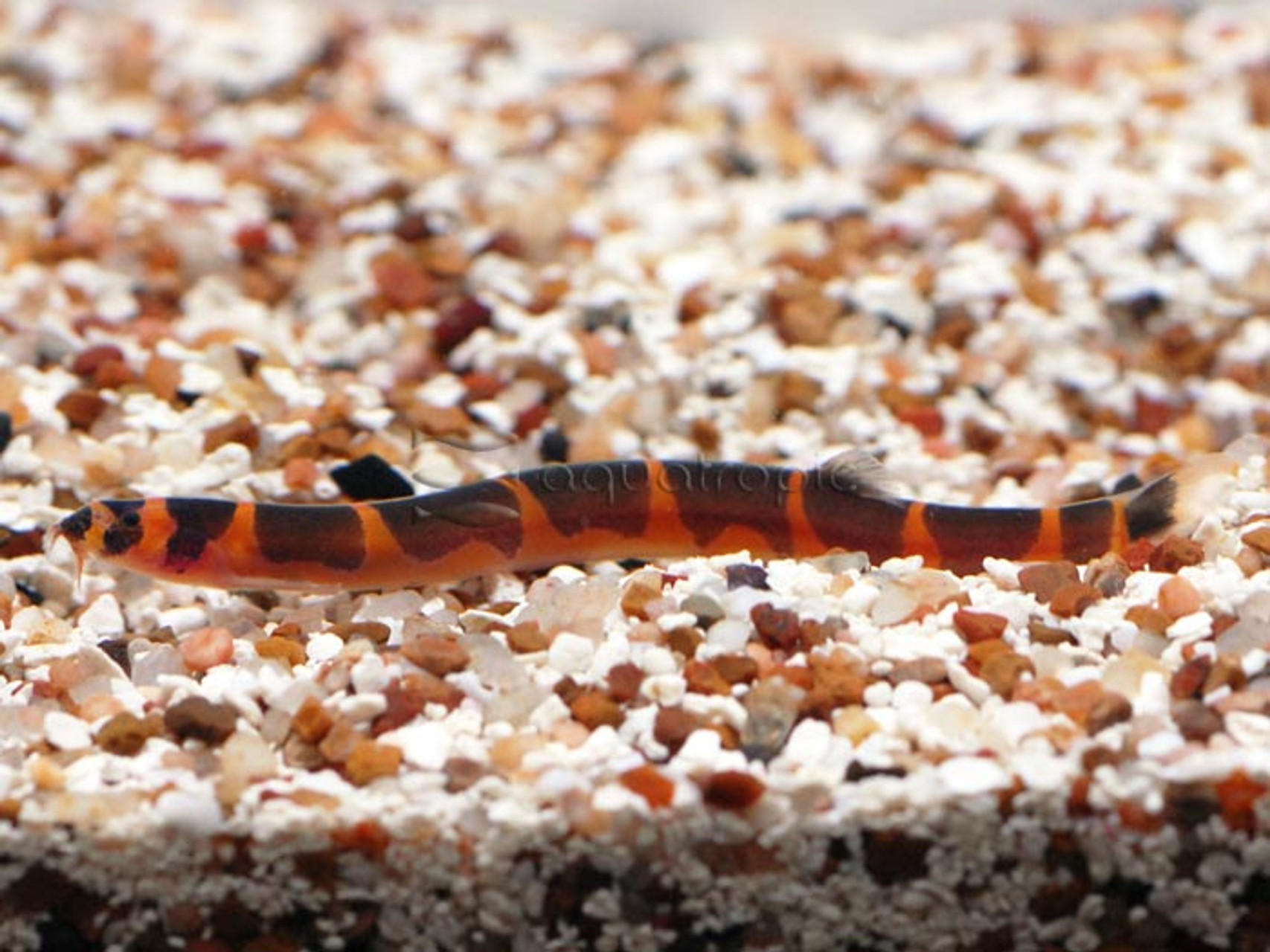
Eels are one of the most familiar groups of fishes and sit alongside sharks and seahorses as a type of fish that nearly everyone can instantly recognize. However, this isn’t entirely accurate. As we’re about to see, there’s a lot more to being an eel than having a long, snake-like body, and, confusingly enough, nearly every freshwater fish that goes by this common name within the aquarium trade is not a true eel, in the ichthyological sense.
There are many advantages to having an elongated body underwater (the term for this is anguilliform, which translates from Latin as “eel-shaped”). Being able to squirm around along the bottom of a stream or lake or marsh opens up a variety of untapped ecological niches. Whereas the morphology and swimming behavior of a cichlid or tetra might limit which nooks and crannies these fishes can explore, an eel-like fish has free reign to poke about in search of prey or to hide from predators.
But when we define what a true eel is, we have to get into the nitty gritty of their morphology, their development, and their evolutionary history. Eels belong to one of the most successful radiations of fish life, the order Anguilliformes. They occupy a vast array of ecosystems, from tropical coral reefs to the deep sea, and come in a bewildering variety of shapes and sizes, but, despite this diversity, there are only about 800 species worldwide, with only around 20 of these found in freshwaters.
Adult eels are easily recognized by the arrangement of their fins. Absent are pelvic fins (and often pectoral fins as well), while the dorsal and anal fins are greatly elongated and confluent with the caudal fin. Juveniles are equally distinctive for their highly flattened and transparent form. These drift about in the plankton as gossamer ribbons and are referred to as “leptocephalus” larvae.
It’s this unusual life history stage that unites the anguilliform eels with their closest relatives (halosaurs, bonefishes, ladyfishes, tarpons) in a larger group known as the Elopomorpha. When we look at the evolutionary history of bony fishes, the elopomorphs are the first group to appear following the emergence of ancient groups like sturgeon, gars, and the bowfin. In this sense, eels are relics, albeit highly successful ones, and they represent roughly 90% of the elopomorph fauna still alive on the planet.
But for whatever reason, despite an evolutionary history stretching back roughly 300 million years, the anguilliforms have been unusually poor at colonizing freshwater ecosystems. This is even more perplexing considering that the other primitive groups (sturgeon, gar, bowfin) are primarily freshwater lineages. Just one eel family (the Anguillidae, with about 20 recognized species) is primarily freshwater. There are one or two moray eels (Muraenidae) that also spend most of their time in coastal streams, but that’s it. And even these still need to return to the sea to breed, so there are no truly freshwater species. Not a single eel has managed to adapt its lifestyle to a permanent life in lakes or swamps.
And this is where the non-anguilliform “eels” fit into the picture. Where the true eels failed, other groups managed to succeed by adapting their morphology to match what has otherwise worked so well for the true anguilliforms. So let’s meet these imposters and decipher their place in the grand picture of fish evolution.
Spiny Eels (Mastacembelus & Macrognathus)
Spiny eels are probably the group most likely to be confused by aquarists with the true eels, but their name alone gives them away as being anguilliform in shape only. The true eels never have spines in their fins, whereas their spiny cousins in the Mastacembelidae can have anywhere from 9-42 spines in the dorsal fin along with 2-3 in the anal fin. These fin spines help us to place these “eels” as derived members of an immense group called the Acanthomorpha (the name roughly translates as “spined”), and they’re surprisingly close relatives to the perch-like fishes.
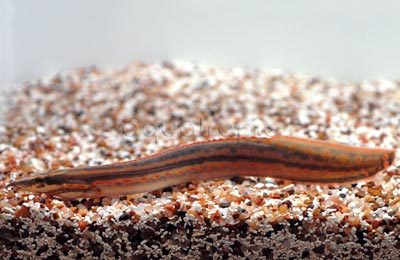
One unique quality of the mastacembelid eels is the presence of specialized pouches above the gills that function as lungs, similar in many ways to the suprabranchial organ found in gouramis. In fact, these two groups are now known to be very closely related, and it seems they shared a common ancestor that emerged somewhere in Africa or Southeast Asia around the time that the dinosaurs were wiped from existence 65 million years ago. With the exception of a few Central American swamp eels (Synbranchidae), this important freshwater lineage is still primarily found only in the Old World.
There are somewhere around 90 species known from the spiny eel family, and all but one of these is placed in one of two highly similar genera, Mastacembelus and Macrognathus. These can range in size from some tiny, 3-inch African species, found in the rapids of the Congo River, to monsters like the Fire Eel (Mastacembelus erythrotaenia), the largest of the spiny eels, which can top out at over a meter in length!
This is also a common species in the aquarium trade, as are a handful of its smaller relatives, so it’s vital to research these fishes before adding one to a fish tank. An adult Fire Eel can certainly predate upon smaller tankmates, though, in general, these are exceptionally peaceful towards anything too large to swallow. They can even be kept in large (5+ specimens) groups together, though they can be quarrelsome amongst themselves if kept in small numbers. For a smaller option, the Zig Zag Eel (Macrognathus pancalus) is a beautifully patterned species from India with a maximum size of just 7 inches.
Reedfish (Erpetoichthys calabaricus)
The unusual reedfish sits at an interesting spot in the history of bony fishes. It’s closest relatives are the bichirs—a stout-bodied genus (Polypterus) found all across tropical Africa—and these two represent the oldest surviving lineage among the bony fishes, the order Polypteriformes, with a record that extends back into the Devonian, some 400 million years ago. This can be seen in the primitive morphology of their skull, the chunky structure of their pectoral fins, and the peculiar finlets found along their back. They are true survivors, and, as one might expect, they can be incredibly hardy creatures.
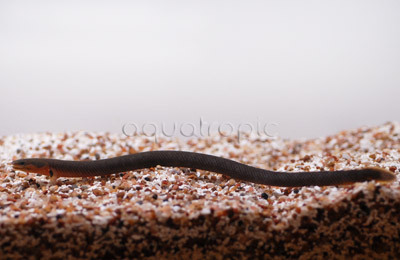
The reedfish is the only member of its genus and is essentially a gracile, eel-like version of the more burly bichirs. It occurs in swamps of West Africa, from whence it emerges at night to feed upon invertebrates. In aquariums, they are peaceful and timid and best kept away from overly boisterous tankmates. A diet of meaty foods, either fresh or frozen, is best, though care should be taken as smaller fishes will also be on the menu. The typical specimens is around one foot in length and can be housed in fairly small aquariums, provided that all openings are tightly covered. Eel-like fishes are masters of escape, and nothing is quite so frustrating as finding one’s eel dried up on the floor like so much piscine jerky.
Dojo & Kuhli Loaches (Misgurnus & Pangio)
Loaches are another group that has often taken to an anguilliform lifestyle. With the exception of oddballs like the hillstream loaches, most of the groups we refer to as loaches are vaguely eel-like in their shape. This isn’t drastically so in fishes like the Clown Loach or Skunk Loach (both in the Balitoridae), but the tendency to become morphologically attenuated really starts to predominate in the other loach families. Many of these are rare in aquariums, but two worthy of mention are the Dojo Loach and the Kuhli Loach.
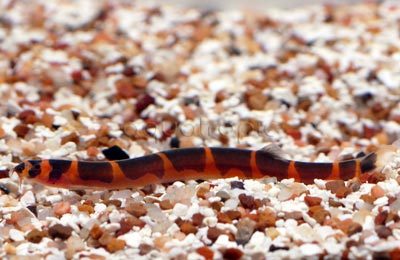
These two belong to the true loach family, Cobitidae, and are fairly typical of this group. The body is extremely elongated and the fins are reduced in size, as these fishes move about mostly by wiggling their bodies against the substrate. The Kuhli Loach (Pangio spp.) has long been a popular oddball for peaceful community aquariums, while the larger Dojo or Weather Loach (Misgurnus anguillicaudatus) is sometimes employed as a useful bottom-feeder. The meteorologic moniker here alludes to the tendency for Misgurnus to swim frantically to the water surface in an effort to gulp air during periods of sudden barometric pressure disturbances (as happens when storms approach). Both genera do well on a diet of meaty foods and must be kept from jumping out of their aquarium or into the filtration equipment.
Prehistoric Dragon Goby (Gobioides broussonnetii)
Similar to the loach example we just mentioned, gobies are a group of elongated fishes that sometimes take things to an eel-like extreme, as exemplified in the bizarre Gobioides. This small Atlantic genus can be found in coastal habitats, either freshwater or brackish (most often the latter), where they ingest the nutrient rich muddy bottom for whatever edible morsels they can glean from it.
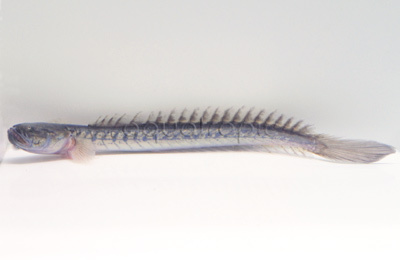
Though it might not sound like the most nutritious of diets, specimens of the common G. broussonnetii have been recorded at nearly 2 feet in length (though the common size of this fish is usually more like 10 inches). Gobioides go by a number of common names, including the descriptive Eelgoby (also used for a number of unrelated genera), the Violet Goby, and the rather whimsical aquarium name Prehistoric Dragon Goby. Gobioides is a spectacular addition for aquarists, but one which requires a bit of planning and forethought, as this goby tends to compete poorly with tankmates when it comes to feeding and has other specialized husbandry requirements to consider. For best results, keep this one in brackish conditions long-term and alongside slow, peaceful tankmates. The natural diet is mostly filamentous algae and diatoms, so algal wafers or pellets are a suitable option, though meatier foods will also be accepted.